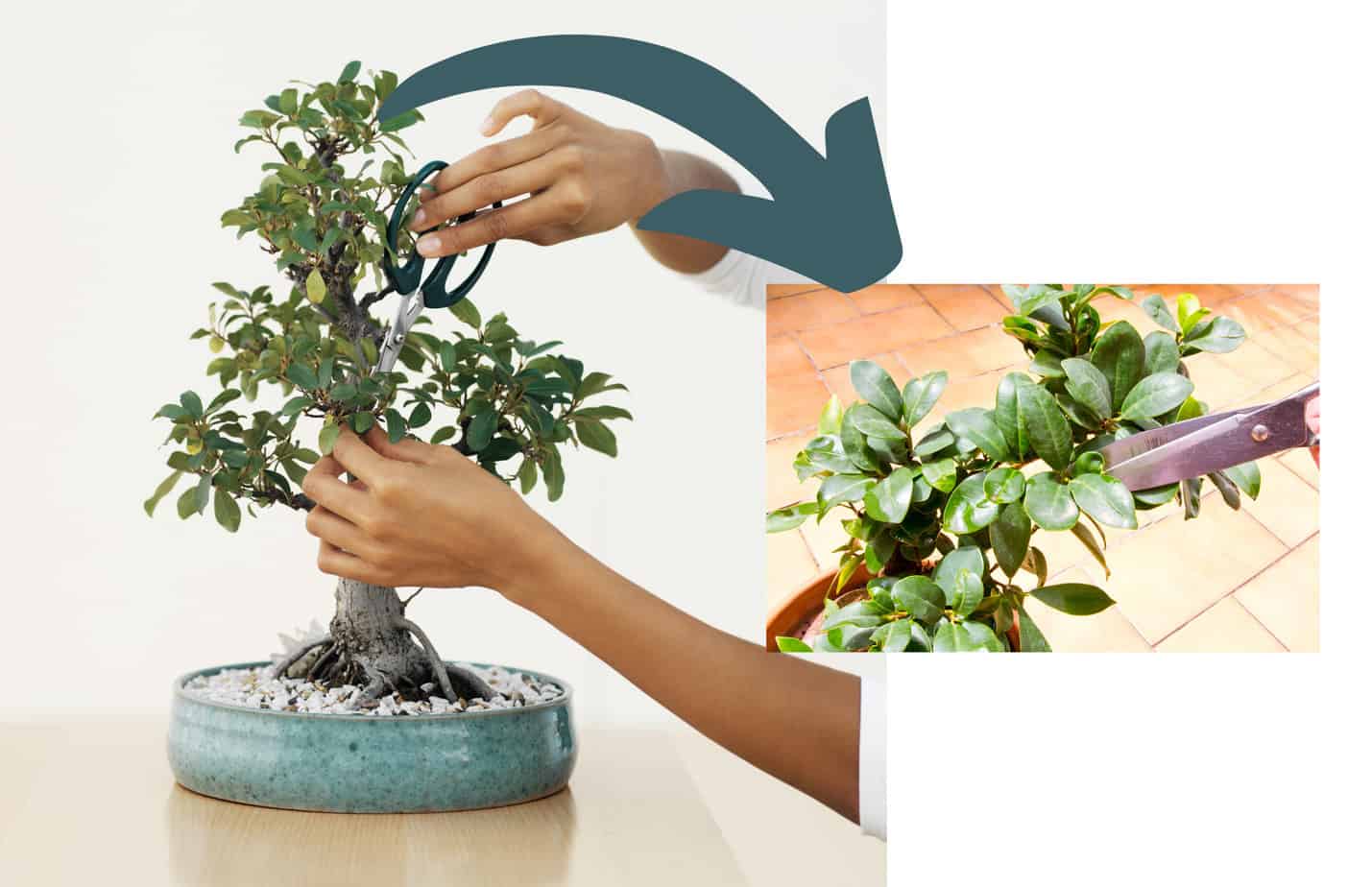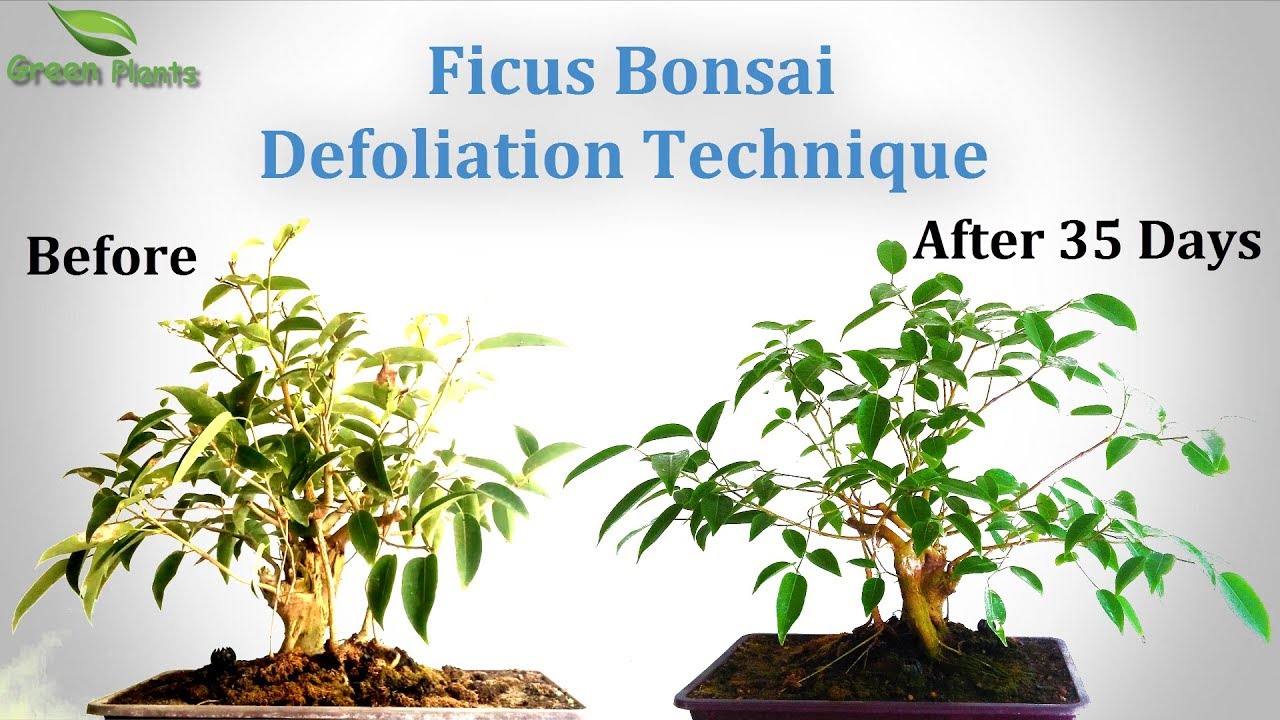To trim a Ficus Bonsai, start by removing any dead or yellowing leaves and branches, and then prune the remaining branches to shape the tree. Additionally, you can use sharp bonsai shears to carefully trim the foliage and maintain the desired form.
Regular maintenance and pruning will help promote healthy growth and maintain the bonsai’s aesthetic appeal. Ficus Bonsai, known for its graceful appearance and intricate beauty, requires regular trimming to maintain its shape and promote its overall health. Proper pruning not only helps to remove dead or yellowing leaves but also allows you to sculpt the bonsai into the desired form.
This guide will provide you with simple yet effective techniques to trim your Ficus Bonsai and ensure its longevity. By following these steps and maintaining a regular pruning routine, you can help your Ficus Bonsai thrive and add a touch of serenity to any space.

Credit: plantly.io
Understanding Ficus Bonsai Trimming Basics
Understanding the basics of trimming a Ficus Bonsai is crucial for its healthy growth. Whether you choose to grow it indoors or outdoors, regular trimming plays an essential role. Trimming helps in maintaining the desired shape and size of the bonsai plant.
But before you grab your pruning shears, there are a few factors that you should consider. Firstly, evaluate the growth pattern and shape of your Ficus Bonsai. This will give you an idea of which branches to trim and which ones to keep.
Secondly, consider the season and growth stage of the plant before you start trimming. Lastly, make sure you have the right tools and techniques to ensure a clean and precise cut. By following these guidelines, you can successfully trim your Ficus Bonsai and promote its overall health and beauty.
How to Trim Ficus Bonsai: Step by Step Guide
Selecting The Right Tools For Trimming
Trimming a Ficus Bonsai requires the right tools. To start, selecting the correct pruning shears is essential. These shears will allow you to make precise cuts without damaging the tree. In addition to pruning shears, there are other tools that can aid in shaping and styling the bonsai.
These additional tools include wire cutters, concave cutters, and knob cutters. Each of these tools serves a specific purpose in the bonsai trimming process. Wire cutters are used to remove or adjust the wires that shape the branches. Concave cutters help in removing branches cleanly and promote healing.
Lastly, knob cutters are perfect for cutting away knobs and creating smoother surfaces. When it comes to trimming a Ficus Bonsai, having the right tools is key to achieving desired results.
Proper Techniques For Trimming Ficus Bonsai
Proper techniques for trimming Ficus Bonsai involve evaluating branches and leaves, identifying deadwood and diseased parts, thinning out overcrowded foliage, creating a balanced canopy shape, and shaping branches with wiring techniques. When it comes to evaluating branches and leaves, you need to assess their health and growth pattern.
Identifying any deadwood or diseased parts is crucial to maintain the overall health of the bonsai. Thinning out overcrowded foliage helps improve air circulation and light penetration. Creating a balanced canopy shape involves pruning branches to achieve symmetry. Additionally, shaping branches using wiring techniques can help achieve the desired aesthetic form.
It is essential to carefully follow these techniques to ensure the proper growth and development of your Ficus Bonsai. Regular trimming and maintenance are necessary to keep your bonsai healthy and beautiful.
Trim Ficus Bonsai
Step-by-Step Guide to Trim Ficus Bonsai: Choosing the Right Time for Trimming: Timing plays a crucial role when it comes to trimming your ficus bonsai. Preparing Ficus Bonsai for Trimming: Before you start trimming, make sure to water the bonsai thoroughly.
Trimming Tips for Branches and Leaves: When trimming branches, always cut them back to a bud or leaf node. Dealing with Thick or Dense Foliage: For thick or dense foliage, thinning is necessary to maintain the bonsai’s shape. Avoiding Common Mistakes while Trimming: Avoid over-pruning, as it can weaken the bonsai.
Take it slow and trim gradually. In conclusion, trimming ficus bonsai requires careful timing, proper preparation, and attention to detail. Follow these steps, and you’ll have beautifully pruned bonsai that will thrive for years to come.
Aftercare And Maintenance Following Trimming
Trimming Ficus Bonsai is a crucial step in its aftercare and maintenance. Adequate watering and nutrient provision are essential for its well-being. Managing sunlight exposure is necessary to avoid any damage. Regular monitoring for pests or disease is crucial to ensure the bonsai’s health.
Pruning wounds healing strategies should be employed for effective recovery. Regular inspection of the bonsai helps identify future trimming needs. By following these guidelines, you can maintain a healthy and attractive Ficus bonsai. Additionally, it is equally important to stay knowledgeable about specific care requirements to meet the bonsai’s unique needs.
With proper care and attention, your Ficus bonsai will thrive for years to come. Remember to be consistent with your care routine and stay observant for any signs of distress. Happy trimming!
Enhancing Ficus Bonsai’S Aesthetic Appeal
Enhancing the aesthetic appeal of a Ficus Bonsai involves skillfully applying wire to achieve the desired shape. By utilizing various Ficus Bonsai styling techniques, such as incorporating different growth patterns and creating a sense of movement, the bonsai can be transformed into a captivating masterpiece.
Carefully shaping the branches and foliage using wire helps to create fluid lines and graceful curves, enhancing the overall visual appeal. Attention to detail and a keen eye for balance and symmetry are essential when trimming a Ficus Bonsai. With patience and practice, these techniques can be mastered, resulting in a bonsai that displays a harmonious blend of natural beauty and artistic design.
So, go ahead and explore the art of trimming Ficus Bonsai and unlock endless possibilities for creating stunning bonsai displays.
Troubleshooting Common Trimming Issues
Trimming ficus bonsai can sometimes pose common issues that may require troubleshooting. One issue is the yellowing of leaves, which may be a sign of fungal infections or diseases. It is important to address these problems promptly to prevent further damage.
Another challenge is treating bonsai stress after trimming, as the process can cause stress to the tree. Special care and attention should be given to ensure its recovery. Additionally, over-pruning or under-pruning symptoms may occur, leading to imbalances in the bonsai’s growth.
Rectifying these symptoms is essential for the overall health and appearance of the tree. By understanding and addressing these common trimming issues, ficus bonsai can thrive and flourish.
Frequently Asked Questions Of How To Trim Ficus Bonsai
How Often Should I Trim My Ficus Bonsai?
Trim your Ficus Bonsai every 4-6 weeks to maintain its shape and prevent overgrowth. Regular trimming promotes healthy growth and gives your bonsai an attractive appearance. Be sure to use sharp, sterile tools and prune back to a bud or leaf node to encourage new growth.
What Tools Do I Need To Trim A Ficus Bonsai?
To trim a Ficus Bonsai, you’ll need a pair of sharp pruning shears, concave cutters, and a bonsai knob cutter. These tools will allow you to make precise cuts, removing excess foliage and shaping your bonsai. Remember to clean and sterilize your tools before and after each use to prevent the spread of diseases.
Can I Trim The Roots Of My Ficus Bonsai?
Yes, you can trim the roots of your Ficus Bonsai. Root pruning is an essential step in bonsai maintenance, as it helps control the size and improve the overall health of your tree. Use a root rake or root scissors to carefully remove any circling or long roots, and repot your bonsai in fresh soil to promote new root growth.
What Is The Best Time Of Year To Trim My Ficus Bonsai?
Late winter or early spring is the best time to trim your Ficus Bonsai. During this period, the tree is in its dormant phase, making it easier to work with. Avoid trimming during the summer or fall when the tree is actively growing, as this can stress the tree and impede its development.
Conclusion
Trimming your ficus bonsai is an essential task that must be done with precision and care. By following the proper techniques, such as using sharp and clean tools, identifying the right branches to prune, and ensuring a balanced and aesthetically pleasing shape, you can maintain the health and beauty of your bonsai tree.
Regular trimming helps to promote new growth, prevent overgrowth, and maintain the desired size and shape of your ficus bonsai. Remember to consider the specific needs and characteristics of your tree, as ficus bonsai varieties may have unique requirements. With patience, practice, and the knowledge gained from this guide, you can confidently tackle the task of trimming your ficus bonsai, and watch it flourish and thrive for years to come.
Happy trimming!

